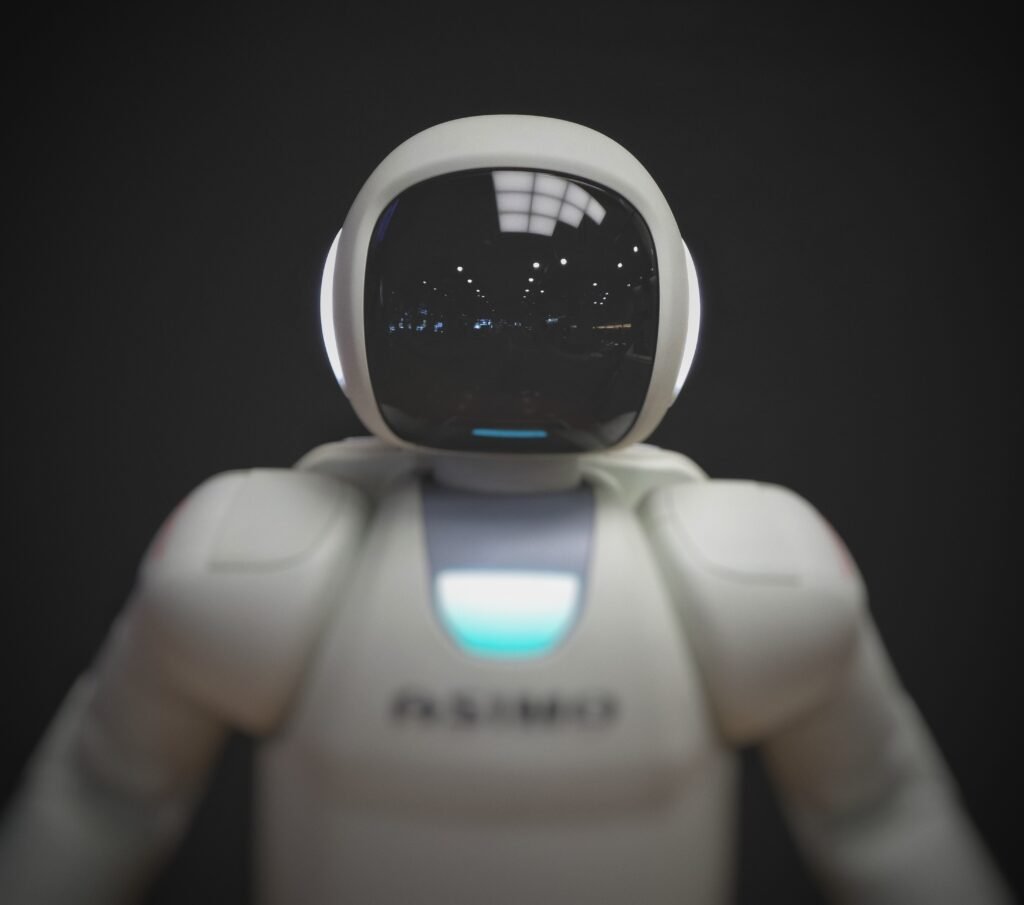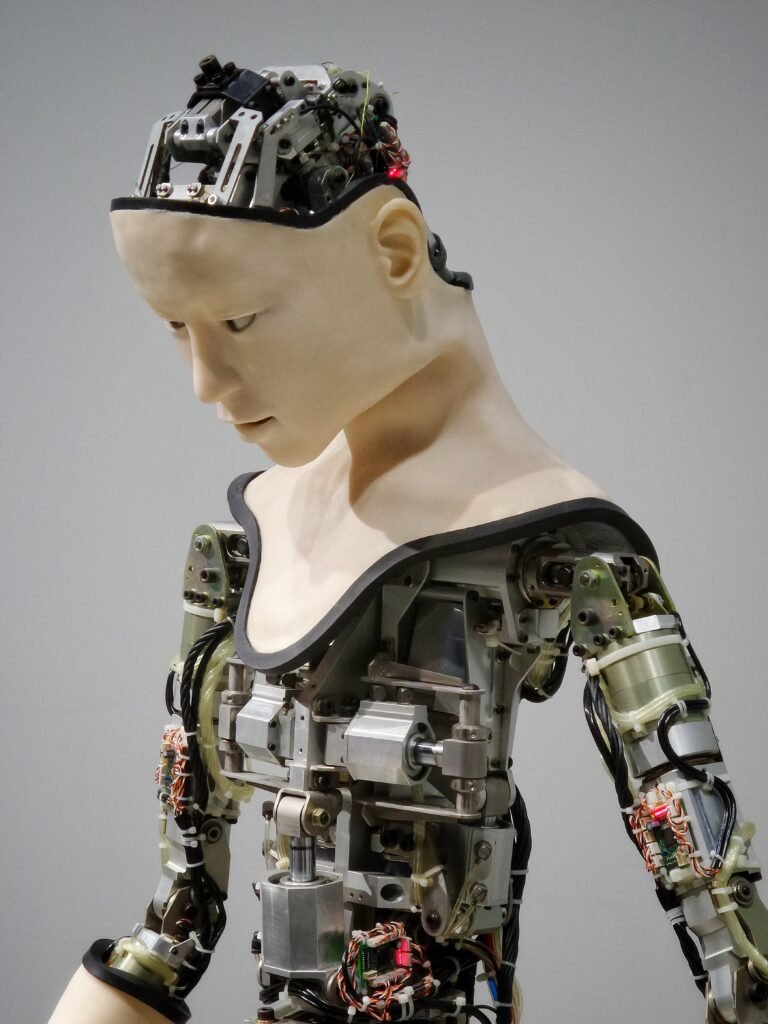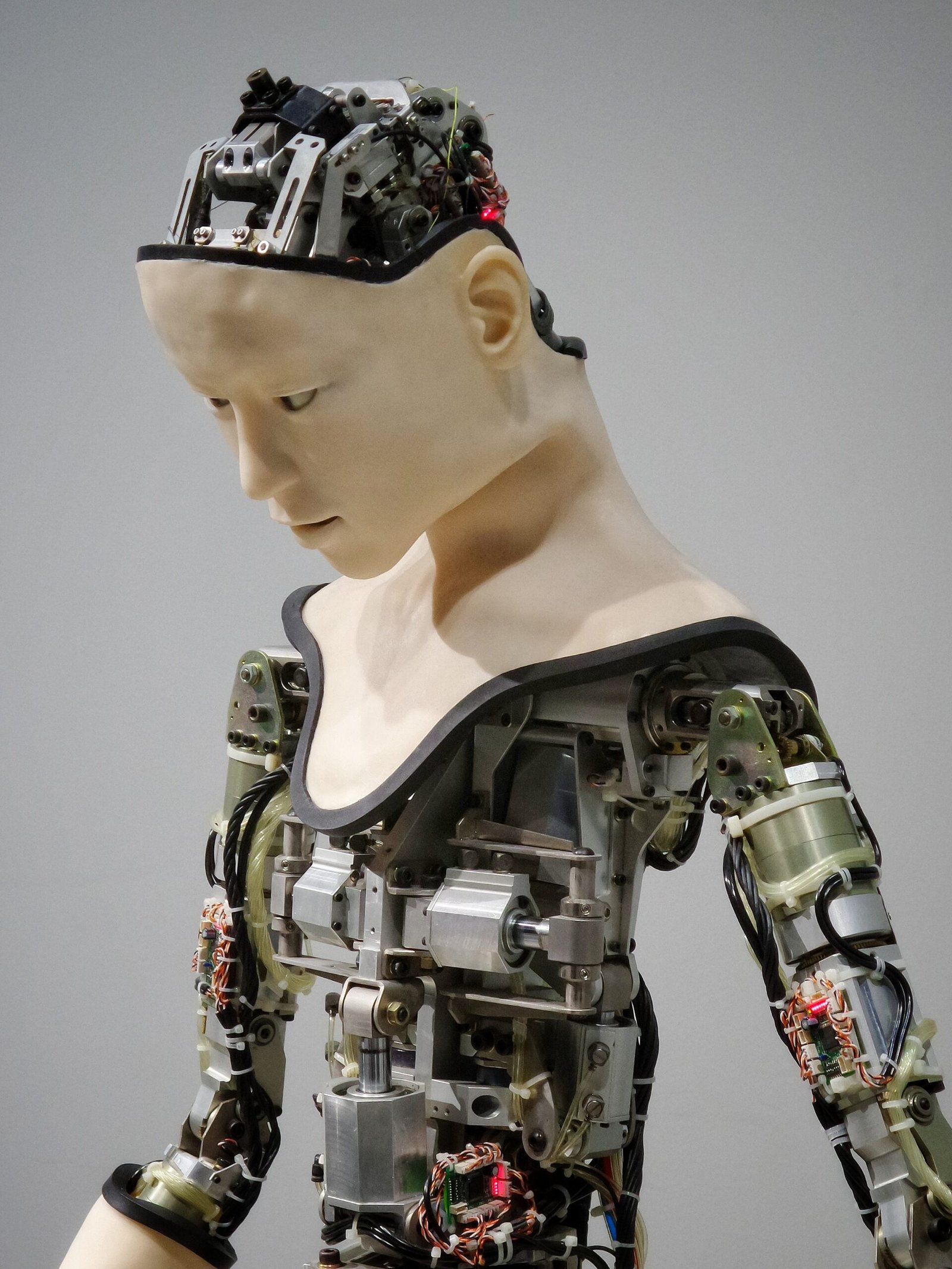Artificial Intelligence, or AI for short, is a fascinating concept that encompasses the creation of intelligent machines that can perform tasks that typically require human intelligence. In simple words, AI refers to computer systems that can think, learn, and make decisions, mirroring human intelligence. Through the use of algorithms and intricate programming, AI is capable of analyzing vast amounts of data, recognizing patterns, and even predicting outcomes. Whether it’s voice recognition technology, personal assistants like Siri or Alexa, or self-driving cars, AI has become an integral part of our daily lives, revolutionizing various industries and paving the way for a future where machines and humans coexist harmoniously. Discover the fundamental principles behind AI and unravel the wonder that lies within this burgeoning field.

Definition of Artificial Intelligence
Understanding the concept of AI
Artificial Intelligence (AI) refers to the development and implementation of computer systems that can perform tasks that would typically require human intelligence. It involves the creation of intelligent machines that can perceive, reason, learn, and problem-solve. AI aims to replicate and mimic human intelligence to solve complex problems and provide efficient solutions.
Mimicking human intelligence
The core idea behind AI is to create systems that can mimic human intelligence. This involves developing algorithms and models that can process large amounts of data, recognize patterns, make decisions, and adapt and improve over time. AI strives to replicate human cognitive processes, such as perception, reasoning, memory, and problem-solving, by using advanced computing technology.
Various definitions of AI
There are various definitions of AI, with some experts emphasizing its ability to simulate human intelligence while others focus on its capacity to perform tasks better and faster than humans. Some consider AI as a branch of computer science, while others view it as a broad interdisciplinary field encompassing various subfields, including machine learning, natural language processing, computer vision, robotics, and more. Ultimately, AI is a complex and evolving field with multiple interpretations and applications.
History of Artificial Intelligence
Early beginnings
The history of AI can be traced back to ancient times, where mythological tales and religious texts describe the creation of artificial beings with human-like qualities. However, the modern concept of AI started to take shape in the mid-20th century, with the advent of computers and the birth of computer science.
The birth of AI as a field
The term “artificial intelligence” was coined at the Dartmouth Conference in 1956, where a group of researchers gathered to explore the possibilities of creating machines that could exhibit intelligent behavior. This marked the official birth of AI as a field of study. In the following years, significant advancements were made in areas such as logic, problem-solving, and pattern recognition.
Evolution and major milestones
Over the decades, AI has undergone significant evolution, driven by advancements in technology and the exploration of new techniques. Major milestones include the development of expert systems in the 1970s, which were designed to mimic human expertise in specific domains. In the 1990s, machine learning algorithms gained prominence, leading to the emergence of powerful AI applications. In recent years, breakthroughs in deep learning and neural networks have revolutionized the AI landscape, enabling machines to achieve remarkable feats in image recognition, natural language processing, and more.
Types of Artificial Intelligence
Narrow AI
Narrow AI, also known as weak AI, refers to AI systems designed to perform specific tasks within a limited domain. These systems excel at one particular task but lack the ability to generalize or transfer knowledge to other domains. Examples of narrow AI include virtual assistants like Siri and Alexa, recommendation systems, and image recognition algorithms.
General AI
General AI, also known as strong AI, refers to AI systems that possess the ability to understand, learn, and perform any intellectual tasks that a human being can do. This level of AI represents human-like intelligence and demonstrates flexibility across a wide range of domains. General AI remains a goal for researchers and remains a subject of ongoing research and speculation.
Superintelligent AI
Superintelligent AI refers to AI systems that surpass human intelligence in virtually every aspect. These hypothetical systems would possess unlimited cognitive abilities, surpassing the most brilliant human minds. Superintelligent AI raises complex ethical and existential concerns, as it could potentially lead to outcomes that are difficult to predict and control.
Applications of Artificial Intelligence
AI in everyday life
AI has become an integral part of our everyday lives, often without us realizing it. From voice-controlled virtual assistants to personalized recommendations on streaming platforms, AI technologies enhance the convenience and efficiency of our daily routines. AI-powered applications are present in smartphones, smart homes, and wearable devices, making our lives more connected and intelligent.
AI in healthcare
In the field of healthcare, AI has made significant contributions. AI-powered systems can analyze medical data, assist in diagnosing diseases, develop personalized treatment plans, and predict patient outcomes. Additionally, AI is aiding in drug discovery, improving medical imaging, and enabling telemedicine, thereby transforming the way healthcare is delivered.
AI in business and finance
AI has revolutionized business and finance sectors by enhancing efficiency, automating processes, and providing data-driven insights. In finance, AI algorithms are utilized for fraud detection, credit scoring, and algorithmic trading. In the business domain, AI-powered chatbots, customer relationship management systems, and predictive analytics tools are increasingly being adopted to improve customer service, optimize operations, and drive innovation.
AI in transportation
The transportation industry is undergoing a transformative shift with the integration of AI technologies. Self-driving cars, powered by AI, have the potential to increase road safety, reduce congestion, and enhance mobility. AI algorithms analyze traffic patterns, optimize route planning, and enable real-time navigation. Additionally, AI is being utilized in logistics and supply chain management to streamline operations and improve efficiency.
AI in entertainment
AI has also made its mark in the entertainment industry. Recommendation systems powered by AI suggest personalized content on streaming platforms, leading to enhanced user experiences. AI algorithms are employed in video games for character behavior and intelligent opponents. AI is also revolutionizing the creative process, with AI-generated artwork, music, and storytelling gaining attention.
AI in cybersecurity
In an increasingly digitized world, AI has become crucial in the field of cybersecurity. AI-powered systems can quickly detect and respond to cyber threats, analyze anomalies in network behavior, and identify patterns indicating potential security breaches. AI helps strengthen the defense against malicious activities, safeguarding sensitive data and critical infrastructure.

Machine Learning and Neural Networks
Understanding machine learning
Machine learning is a subset of AI that focuses on the development of algorithms and models that allow computer systems to learn and improve automatically from experience, without being explicitly programmed. Machine learning algorithms leverage data to identify patterns, make predictions, and generate insights.
Supervised learning
Supervised learning is a type of machine learning where the algorithm is trained on labeled data, where the desired output is already known. The algorithm learns to map the input to the correct output by generalizing from the labeled examples. Supervised learning is widely used in applications such as image recognition, text classification, and speech recognition.
Unsupervised learning
Unsupervised learning is a type of machine learning where the algorithm learns patterns and structures in the data without any prior knowledge or labeled examples. The algorithm discovers hidden patterns, clusters similar data points, and uncovers insights that may not be apparent to humans. Unsupervised learning is used in applications such as data clustering, anomaly detection, and recommendation systems.
Reinforcement learning
Reinforcement learning is a type of machine learning where an agent learns to interact with an environment and maximize its performance by receiving feedback in the form of rewards or penalties. The agent learns through a trial-and-error process, exploring different actions and learning from the consequences. Reinforcement learning has been successful in training AI agents to play games, control robots, and optimize complex systems.
Neural networks and deep learning
Neural networks are a class of algorithms inspired by the structure and function of biological brains. They consist of interconnected nodes, or artificial neurons, organized in layers, and are capable of learning complex patterns and representations. Deep learning, a subset of neural networks, involves training neural networks with multiple hidden layers. Deep learning has achieved remarkable breakthroughs in areas such as image recognition, natural language processing, and autonomous driving.
Ethics and Concerns of Artificial Intelligence
Ethical considerations
As AI becomes more powerful and pervasive, ethical considerations must be taken into account. Questions of AI ethics revolve around issues like privacy, bias, accountability, transparency, and the impact of AI on society. It is essential to develop robust ethical frameworks and guidelines to ensure that AI is deployed responsibly and in a manner that aligns with human values and societal norms.
Job displacement
The rise of AI and automation has raised concerns about job displacement and the impact on the workforce. While AI may automate certain tasks, it also has the potential to create new job opportunities and enable humans to engage in more creative and meaningful work. Education and training programs will play a crucial role in equipping individuals with the skills needed for the AI-driven economy.
Bias and fairness in AI
AI algorithms learn from data, and if the training data is biased, it can lead to biased outcomes and reinforce existing inequalities. Fairness and the mitigation of bias in AI systems are important considerations. Efforts are being made to develop methodologies that minimize bias, ensure fairness, and create AI systems that are transparent and accountable.
Privacy and data security
AI relies on vast amounts of data to train models and make predictions. This reliance raises concerns about privacy and data security. Ensuring that personal information is handled ethically and securely is crucial. Regulations and measures that protect individuals’ privacy rights and provide transparency and control over data usage are necessary to maintain public trust in AI technologies.
Existential risks
The development of superintelligent AI poses existential risks that are difficult to predict and address. Concerns include the potential loss of control over advanced AI systems, unintended consequences, and the impact of AI on human society and civilization as a whole. Researchers, policymakers, and experts are actively exploring ways to address these risks and ensure safe and beneficial AI development.

Impacts of Artificial Intelligence
Advancements in various industries
AI has already made significant impacts across various industries. From healthcare to finance, transportation to entertainment, AI-powered solutions are revolutionizing processes, enhancing efficiency, and driving innovation. AI is expected to continue transforming industries, leading to increased productivity and improved outcomes.
Automation and productivity
One of the primary impacts of AI is automation, which eliminates repetitive and mundane tasks, allowing humans to focus on more complex and creative endeavors. By automating processes, AI increases productivity, reduces costs, and accelerates innovation. Automation powered by AI has the potential to revolutionize industries and reshape the nature of work itself.
Improved healthcare
AI has the potential to vastly improve healthcare outcomes by providing more accurate diagnoses, personalized treatment plans, and real-time monitoring. AI-powered systems can analyze massive amounts of patient data, identify patterns, and provide insights to healthcare professionals, enabling them to make more informed decisions and improve patient care.
Enhanced decision-making
AI can augment human decision-making by providing data-driven insights, predictive analytics, and recommendations. AI algorithms can process and analyze vast amounts of data, identify patterns and trends, and assist humans in making informed decisions. From business strategies to financial investments, AI empowers decision-makers with valuable information and insights.
Societal implications
The impacts of AI extend beyond individual industries and have broader societal implications. AI has the potential to bridge economic and social divides, improve access to education and healthcare, and foster innovation and economic growth. However, it also raises concerns about job displacement, inequality, and the ethical use of technology. Balancing these implications and ensuring AI benefits all of society represents a significant challenge.
Current Limitations and Challenges
Data limitations
AI heavily relies on high-quality and diverse datasets for training models and making accurate predictions. However, obtaining and curating quality data can be challenging and time-consuming. Limited and biased datasets can lead to suboptimal performance and reinforce existing biases. Therefore, addressing data limitations and ensuring the availability of reliable and representative data continue to be challenges in AI development.
Lack of common sense understanding
While AI systems excel in specific tasks, they often lack common sense understanding that humans possess effortlessly. AI struggles with recognizing context, understanding nuances, and comprehending the world in the same way humans do. Developing AI systems capable of understanding and reasoning common sense knowledge remains an ongoing challenge in the field of AI.
Explaining AI’s decisions
Another challenge in AI is the lack of explainability. Many AI algorithms, especially those based on deep learning and neural networks, are often considered “black boxes” because they provide outputs without transparently explaining how and why those decisions were made. This lack of transparency raises concerns regarding bias, fairness, and accountability. Researchers are actively working on techniques to make AI systems more interpretable and explainable.
Regulation and policy challenges
As AI evolves and becomes more prevalent, policymakers face challenges in developing appropriate regulations and policies. Striking a balance between fostering innovation and ensuring ethical use of AI can be complex. Regulating AI while avoiding stifling its potential requires thoughtful consideration and collaboration between experts, researchers, policymakers, and industry stakeholders.
Technical limitations
AI researchers constantly work towards solving technical challenges that impede the progress of AI. These challenges include developing more efficient algorithms, overcoming hardware and computational limitations, addressing issues of scalability and privacy concerns, and pushing the boundaries of AI research. Technical advancements will continue to shape the future of AI, addressing limitations and enabling more sophisticated AI applications.
Artificial Intelligence in Popular Culture
Portrayal in movies and TV shows
AI has captivated popular culture for decades and has been a recurring theme in movies and TV shows. Whether it be intelligent robots, sentient AI systems, or dystopian futures, AI has been depicted in various ways, ranging from friendly companions to threats to humanity. Movies like “2001: A Space Odyssey,” “Ex Machina,” and TV shows like “Black Mirror” offer thought-provoking narratives that explore the possibilities and consequences of AI.
AI as fictional characters
AI characters have become iconic in popular culture. From HAL 9000 in “2001: A Space Odyssey” to WALL-E in the eponymous film, these fictional AI beings have captured the imagination of audiences worldwide. These characters evoke a wide range of emotions, from awe to fear, and serve as vehicles for exploring the complexity of human-machine interactions and the potential implications of advanced AI systems.
Impact on popular culture
AI’s influence extends beyond fictional portrayals. AI technologies have permeated popular culture through virtual assistants like Siri and Alexa, video game characters, and virtual reality experiences. AI-powered applications and devices have become integrated into people’s lives, shaping their experiences, and driving cultural changes. As AI continues to evolve, its impact on popular culture is likely to deepen, reflecting both hopes and concerns about the potential of AI.
Future of Artificial Intelligence
Continued advancements
The future of AI holds the promise of continued advancements and breakthroughs. As computing power increases, algorithms become more sophisticated, and datasets grow, AI systems are expected to become more powerful, accurate, and efficient. This ongoing progress will unlock new frontiers and applications, transforming industries and human experiences.
Potential for AGI and ASI
Artificial General Intelligence (AGI) refers to AI systems that can surpass human intelligence across various domains and perform any intellectual task that a human can do. Achieving AGI remains a long-term goal and a subject of intense research and speculation. There is also speculation about Artificial Superintelligence (ASI), which surpasses human intelligence to an even greater extent, potentially leading to unprecedented developments and challenges.
Integration in various domains
AI will likely become increasingly integrated into various domains, ranging from healthcare and transportation to finance and education. As AI technologies mature, their widespread adoption will revolutionize industries, streamline processes, and enable new possibilities. The integration of AI will continue to reshape the way we live, work, and interact with technology.
Societal and economic implications
As AI becomes more widespread, its societal and economic implications will become more pronounced. Ensuring equitable access to AI, addressing job displacement, and managing the ethical implications of AI will be essential to ensure that AI benefits society as a whole. Policymakers, industry leaders, and researchers must work together to shape the future of AI in a way that aligns with human values and fosters positive societal and economic outcomes.
In conclusion, artificial intelligence is a rapidly evolving field with broad-ranging applications and implications. From mimicking human intelligence to enhancing decision-making, AI has the potential to revolutionize industries, transform lives, and shape the future. While it offers immense promises, AI also poses challenges and concerns, such as bias, privacy, and ethical considerations. As AI continues to advance, careful deliberation and collaboration are necessary to navigate these complexities and ensure that AI development aligns with human values and societal goals.






